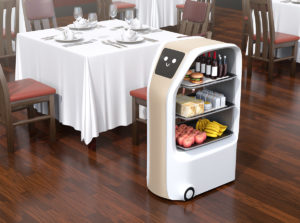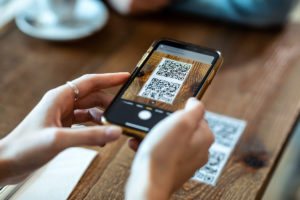Technological developments have continued to influence how business is done in foodservice. Thanks to technology, eating at a restaurant or ordering delivery look very different today than decades past. From using artificial intelligence to address logistical and staffing challenges to incorporating existing technologies into daily operations to support sustainability efforts, technology’s influential role in the foodservice industry is only continuing to expand. Here’s a closer look at some of the ways that technology is shaping the foodservice industry.
The Adoption of Artificial Intelligence

In terms of food delivery, whether to restaurant tables or to the home, the use of robots has become a bit more common. Taking on the role of servers and delivery drivers, more operators have tested out how robots can save on staffing costs, and in the case of home delivery, fuel consumption.
Changes to Ordering
One basic technological advancement that has influenced the way consumers order food is through the use of QR codes in restaurants. Rather than offering printed menus, many operators, of varying sizes and types, have turned to putting QR codes on tables, walls, and small index card-sized menus. Scannable with just about any smart phone, QR codes allow operators to cut down on the cost of printing menus, as well as the time it takes to distribute menus.
This change has been largely embraced by consumers for two reasons. First of all, consumers are growing increasingly concerned about environmental issues, and the use of QR codes cuts down on the amount of paper restaurants use, thus signaling support for more sustainable practices. Secondly, consumers are still concerned about the spread of germs and diseases. In a post-pandemic world, not having to handle a menu that many others have that day gives them some peace of mind.
Beyond QR codes, other restaurants have turned to kiosks for ordering, allowing them to also address staffing challenges and cut down on paper menus. While these efforts will likely be popular with most consumers, some may dislike the lack of personal interaction that they get with wait staff. Consumers have, however, embraced this lack of interaction when it comes to delivery, gravitating towards contactless options. As technology continues to evolve, they’ll continue to adapt to the conveniences that these advancements offer.
Hungry for more? Subscribe to our e-newsletter to get our insights in your inbox!




 For more information about Fuchs North America's products and programs that support food manufacturers in their product development needs, please
For more information about Fuchs North America's products and programs that support food manufacturers in their product development needs, please